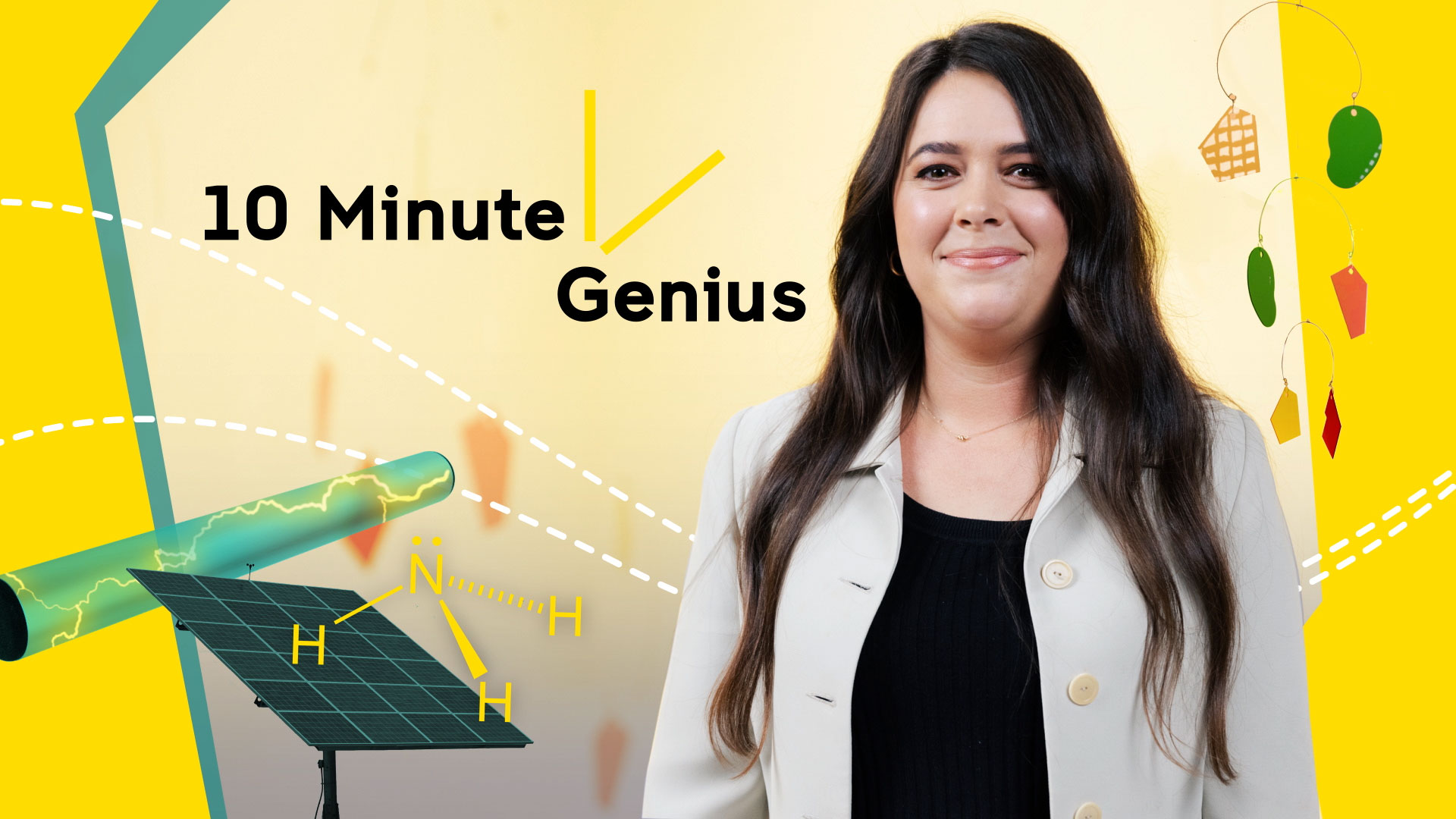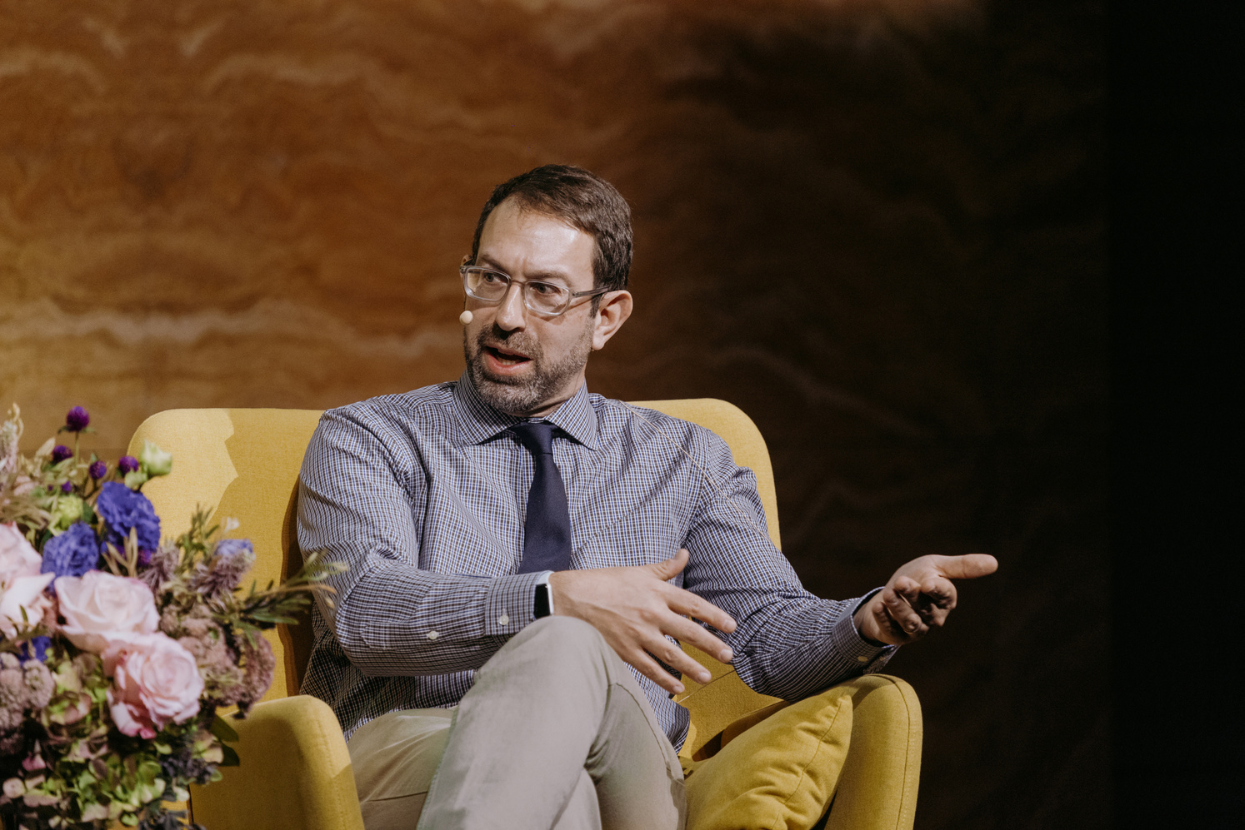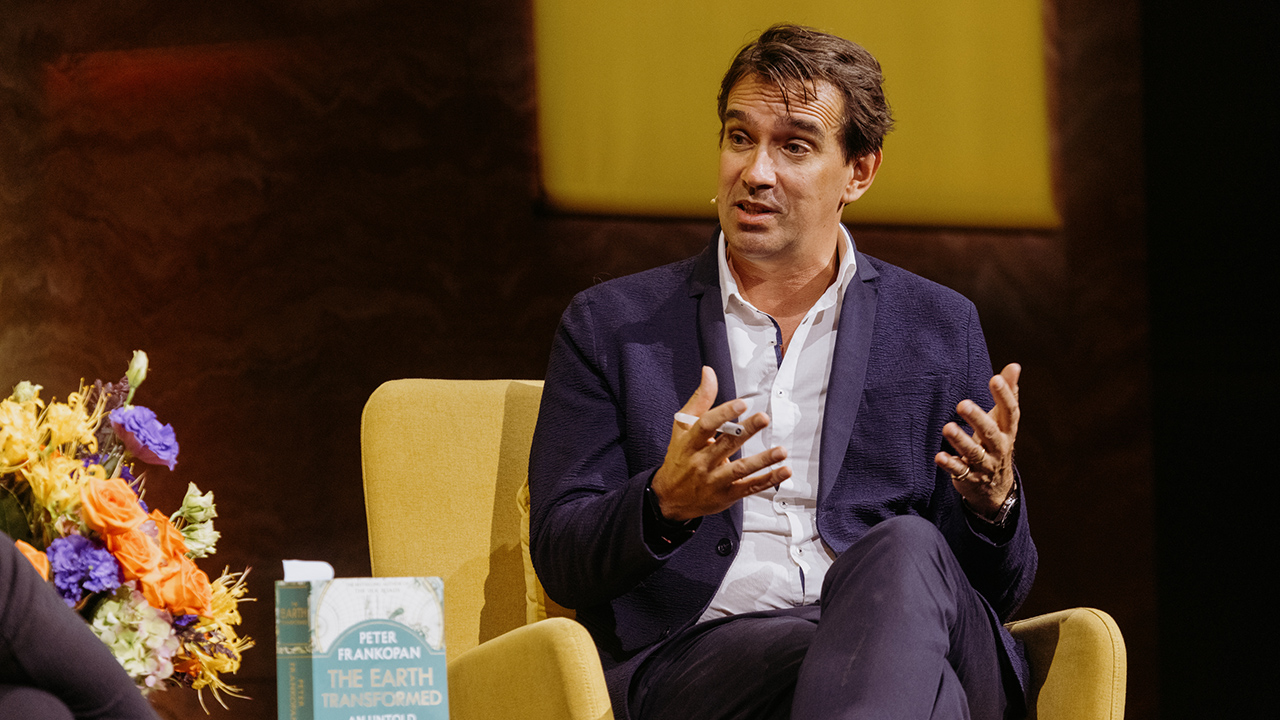Emma Lovell | Power to X: The Fossil Fuel Puzzle

We have an opportunity to move away from fossil fuels to power our world for a more sustainable future. While that transition is well underway when it comes to switching to renewable household electricity, things like plastic and ammonia are a different challenge.
Our fossil fuel consumption is so much larger than fuel for cars and electricity, and it’s our over reliance on these fuels which has seen us hurtling at full speed towards a future of climate catastrophe. While we’ve made some huge technological advances in the space of electric cars, solar panels and wind power, other industries like plastic production and ammonia which is a key component of fertilizers are a different challenge to shift. Over 99% of plastic is made from chemicals sourced from fossil fuels and nearly all of the fertilizer produced, used to grow the world’s fruit and vegetables comes from fossil fuel too. These products have been absolutely pivotal in human development and progression, but it’s time for a change.
So how can we rethink the way we produce these fossil fuel intensive products in a way that is better for the planet?
In 10 minutes or roughly the amount of time it takes to take the recycling out, Chemical Engineer Emma Lovell will explain how she is creating catalysts to transition us to a more sustainable future.
ABOUT 10 MINUTE GENIUS
In this sprawling digital age where a universe of information is accessible within seconds, it's easy to be paralysed by the simple question of where to begin.
Introducing: Ten Minute Genius, a series of short talks designed to create a space in which you can engage with new ideas. We have curated a collection of material scientists, philosophers and maths lovers to help you make some sense of this chaotic information vortex. And because you’re busy, all we ask of you is just ten minutes.
Transcript
UNSW Centre for Ideas: Welcome to the UNSW Centre for Ideas podcast – a place to hear ideas from the world’s leading thinkers and UNSW Sydney’s brightest minds. The talk you are about to hear forms part of the 10 Minute Genius series, a curated collection of UNSW’s thinkers, dreamers and envelope pushers helping you make some sense of the relentless information vortex in which we live. In under 10 minutes, or roughly the amount of time it takes to put the recycling out, Chemical Engineer Emma Lovell explains how she is creating catalysts to transition us to a more sustainable future.
Emma Lovell: When we think of fossil fuels, our minds often go to household electricity and fuel for cars but we rely on fossil fuels for so much more. Over 99% of plastic is made from chemicals source from fossil fuels, and nearly all of the ammonia produced used to fertilise crops to feed the world comes from fossil fuel sources too.
We currently have an opportunity to move away from fossil fuels to power our world for a more sustainable future. While that transition is well underway, when it comes to switching to renewable household electricity, things like plastic and ammonia are a different challenge. That's where my field chemical engineering can help. I'm Emma Lovell and this is 10 Minute Genius. In that time, I'm going to tell you how I'm creating catalysts to help us transition to a more sustainable future – faster and smarter.
In a single hour, the amount of energy from the sun that strikes the Earth is more than the entire world consumes in a year. Our challenge is to harness this and other renewable sources of energy to meet our needs in a more sustainable way. Let's focus on ammonia. Ammonia is one of the world's most important industrial chemicals, around half of the world's food production relies on ammonia-based fertiliser – that means billions of people wouldn't be alive today without this amazing chemical and the processes that we use to create it.
Around World War I, scientists Fritz Haber and Carl Bosch invented the process we still use to produce ammonia today. It's named the Haber Bosch process after its inventors, and it allows us to combine nitrogen from air with hydrogen currently from natural gas to create ammonia. The natural gas from that equation is made up mostly of methane and is a fossil fuel. This process also requires huge amounts of energy to reach the high temperatures and pressures required for the reaction to take place and I'm talking high – with temperatures of 450 degrees and high pressures of about 200 atmospheres, so while the Haber Bosch process benefits us, allowing us to make fertilisers for crops to feed the world, it also has a downside – producing ammonia in this way accounts for one percent of the world's total energy use, whilst producing more carbon dioxide than any other chemical making process. That's roughly the equivalent to the total emissions of Australia just for making ammonia.
As a chemical engineer, solving this type of problem is what gets me out of bed in the morning. The solutions that I work on use power to X. Power to X is a term for processes that allow us to convert power in the form of green renewable energy into chemicals and fuels. X can represent a range of different chemicals from hydrogen to methane, or in this case, ammonia for fertiliser. It allows this variable intermittent and difficult to store and transport energy to be converted into chemical energy to power our everyday lives.
To convert this renewable power to ammonia, we need a catalyst, which is something in which I specialise in creating. So what is a catalyst? A catalyst is something that can speed up the rate of a reaction without changing the result. Picture a giant mountain in front of you, and a beautiful swimming oasis on the other side, a normal reaction would proceed by climbing up over the mountain down the other side and ending at your swimming destination – now that would require a lot of energy. Adding a catalyst is like adding a tunnel through the mountain from where you are now to where you want to be on the other side.
Now, instead of hiking up over the mountain, and down to your swimming destination, you can take the tunnel, it's easier and it uses much less energy. So that's what a catalyst does, it doesn't change your stop point, nor does it change your final destination, but it does change the path that you go to get there. I design catalysts all the way down to the individual atom. The particles I work with are around 10,000 times smaller than the thickness of an individual human hair.
Using the catalyst I create and the power to X concept, we can transition away from conventional large scale production, storage and transportation of ammonia to producing fertilisers on site on demand without the need for storage and transport, and most importantly, without the need for fossil fuels.
To find a new way to create ammonia, we look to nature. Naturally during a storm when lightning strikes, nitrogen from the air is transformed, so why not attempt to recreate this in the lab? By generating lightning in a tube known as plasma, we can convert air and water into reactive species of nitrogen and oxygen, known as NOx. This NOx can then be directly converted to ammonia using renewable electricity. The process doesn't require high temperatures or pressures that are needed for Haber Bosch that we've been using for over 100 years and it doesn't require fossil fuels either. Ammonia is just one of the many useful products that myself and other chemical engineers are working hard to find green processes to produce, so when I look at these missing pieces of our energy transition puzzle, I don't just see a challenge I see an opportunity to be a catalyst for change.
UNSW Centre for Ideas: Thanks for listening. For more information visit centreforideas.com and don't forget to subscribe wherever you get your podcasts.

Dr Emma Lovell
Dr Emma Lovell is a Senior Lecturer and ARC DECRA Fellow in the School of Chemical Engineering at UNSW Sydney. Her research, undertaken in the Particles and Catalysis (PartCat) Research Group focuses on developing novel catalysts for a range of applications; with a particular focus on energy and environmental catalysis. Emma completed her PhD in 2016 at UNSW developing catalysts for carbon dioxide conversion.




